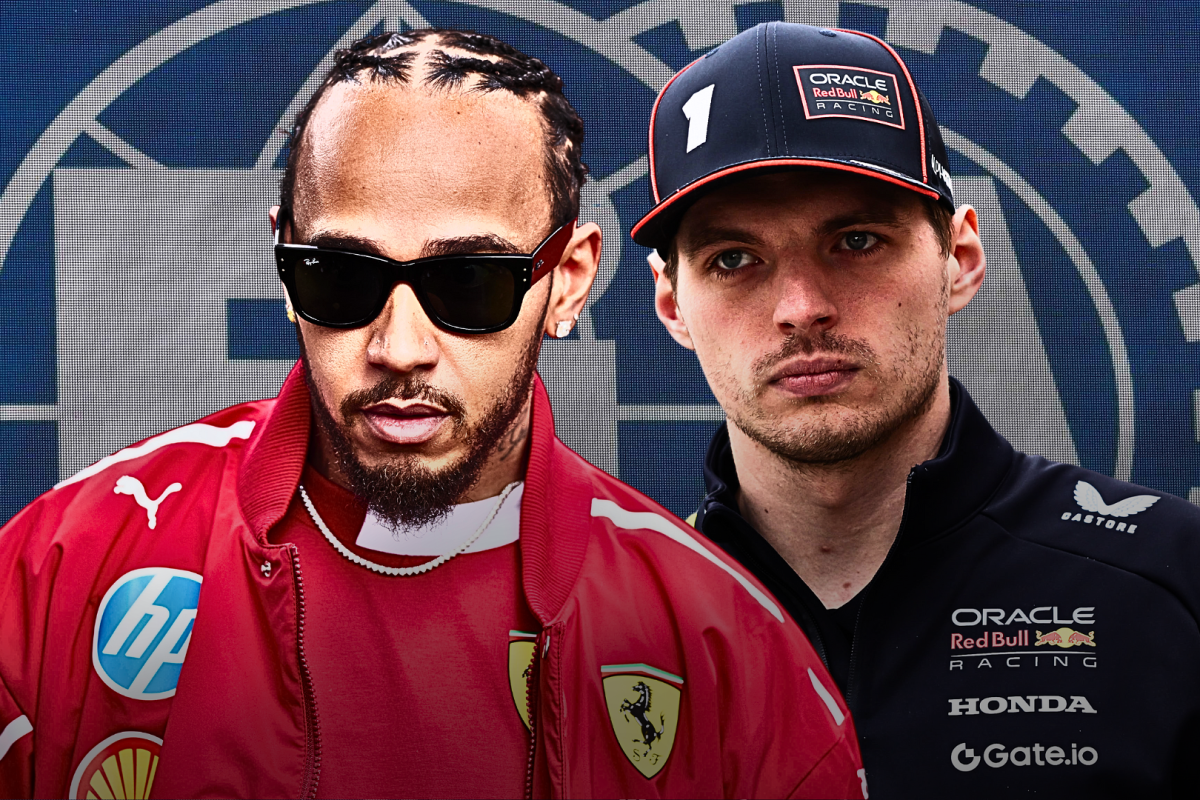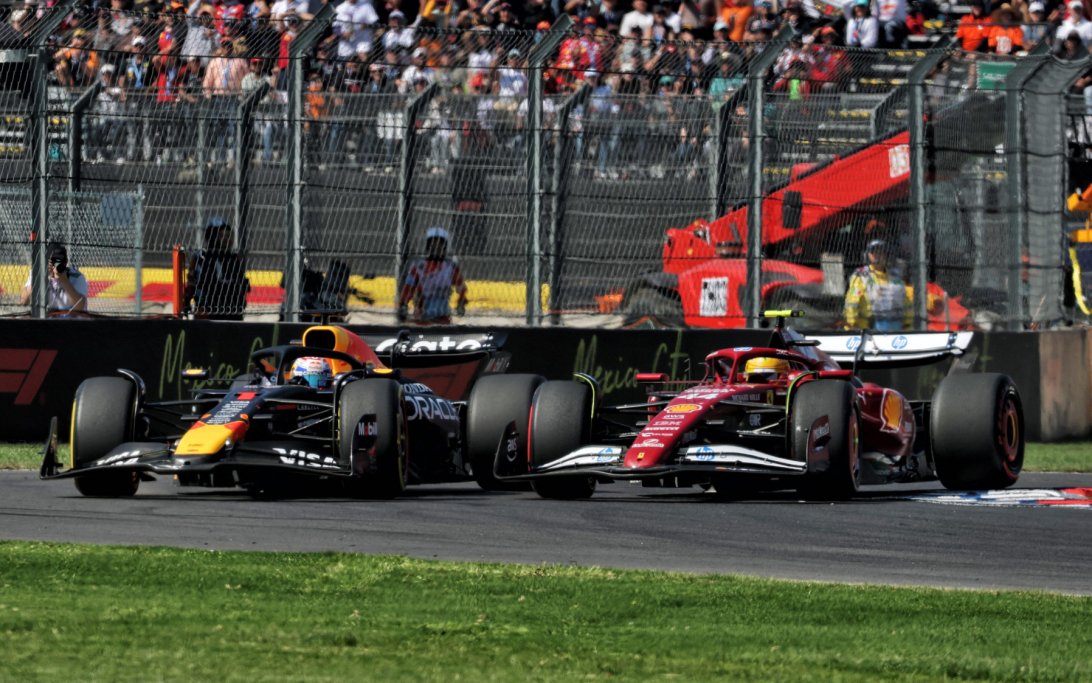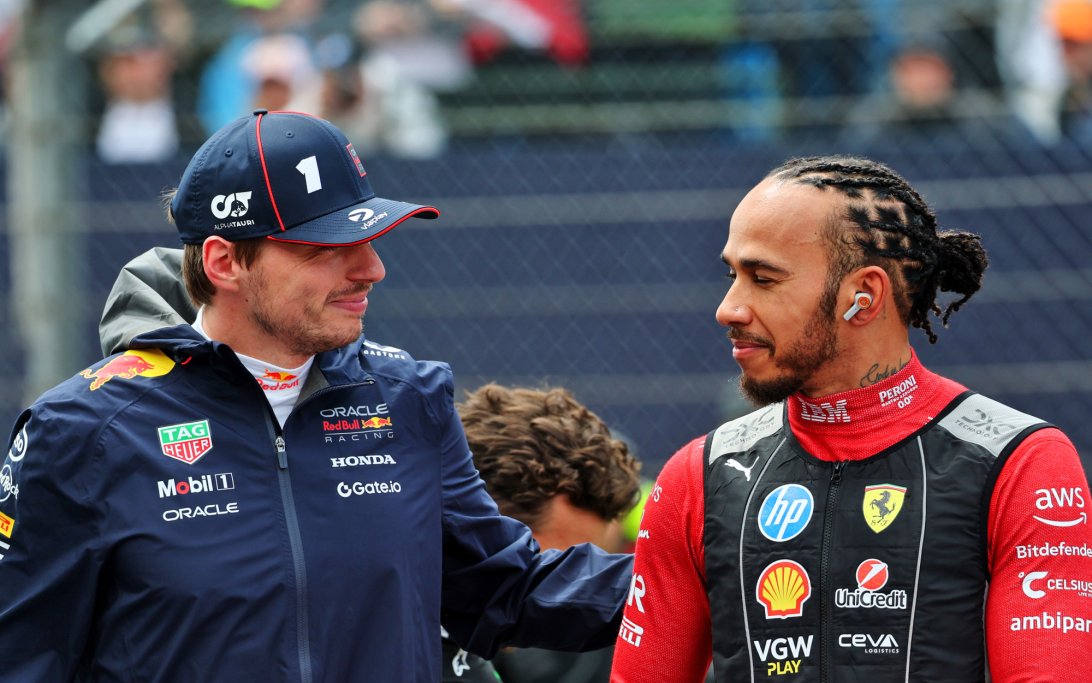In the rarefied air of Formula 1, where billion-dollar teams fight for thousandths of a second, the line between destiny and disaster is razor-thin. For Lewis Hamilton, that line has just been crossed, not by a rival, but by the very body that governs the sport. The 2025 Mexico Grand Prix will not be remembered for its on-track action; it will be remembered as the moment the FIA’s credibility collapsed, leaving a smoking crater and a seven-time world champion caught in the debris.
A 10-second penalty for an incident the FIA’s own documents admitted was “justifiable” and “physically impossible” to avoid has sent shockwaves through the paddock. This isn’t just a bad call. It’s a crisis of governance, a chilling echo of the night that defined, and perhaps forever tainted, a world championship. For Hamilton and his new home at Ferrari, the timing is catastrophic. For the sport, it’s a terrifying admission: the rules are now officially optional.
To understand the fury, one must first understand the glory. We must rewind to November 2021, at Interlagos in Brazil. It was the place where Hamilton, then at Mercedes, delivered a performance that transcended sport. He arrived under siege, disqualified from qualifying, starting dead last for the sprint race.
He carved through the field, fought back to P10 for the main event, and then, in a display of breathtaking skill and relentless will, he hunted down his rival Max Verstappen. He overtook 24 cars in total. It was a victory against adversity, a warrior refusing to die. Brazil didn’t just see a win; it saw a legend defy the impossible.

Now, fast-forward to 2025. The man who conquered Brazil just got destroyed in Mexico by a rule book that openly contradicts itself.
It happened at Turn 4 in Mexico City. Hamilton and Verstappen, side-by-side, both pushing to the absolute limit. Contact was inevitable. Hamilton, pushed wide, locked his brakes. The physics of 2,240 meters of altitude, where thin air robs cars of grip and brake cooling, took over. His front wheels froze. He cut across the grass and rejoined the track. Then, the call came: a 10-second penalty. Race over.
“That’s ridiculous! 10 seconds for what?” Hamilton’s voice cut through the radio like a blade. In the Ferrari garage, a team that had just found its groove with Hamilton, tasting a podium in Austin, fell into a stunned, disbelieving silence.
But the true bombshell landed after the race. The FIA, in its official capacity, released two documents to explain one incident. The contradiction was staggering. Document 36 penalized Hamilton for gaining an advantage outside track limits. But Document 37 stated Hamilton had a “fully justifiable reason” for his actions and that following the prescribed protocol was “physically impossible.”
It is hard to overstate the gravity of this. The sport’s governing body, in black and white, admitted the driver was justified and then punished him anyway. It was an act of self-immolation, an admission of incompetence or, far worse, of malice.
The “why” was answered by Ferrari’s own data. Telemetry, the cold, hard numbers that cannot be spun, proved Hamilton’s innocence. The data showed his front wheels locked completely. The steering angle showed he was desperately trying to make the corner, but physics had taken the wheel. He wasn’t avoiding the corner; he was a passenger in a car that had lost all grip. Even more damning, Ferrari’s GPS traces showed that Hamilton actually lost time in the incident. There was no “advantage gained.” There was only chaos.
This evidence makes the penalty incomprehensible as a sporting decision. Which is why a single, leaked sentence from inside the steward’s room is so chilling. The alleged motive? “We need to maintain authority after the track limits chaos in the opening laps.”
This was never about Hamilton’s lock-up. This was about the FIA, having lost control of the race, deciding to make an example. It was about authority, not fairness. It was an ego-driven power play, and Lewis Hamilton was the pawn sacrificed to re-establish control.
If this all sounds horrifyingly familiar, it should.

Abu Dhabi. 2021. The finale. A championship on the line. A late-race crash and a safety car. A Race Director, Michael Masi, who, in a moment of panicked improvisation, violated the sport’s own regulations. He allowed only the five lapped cars between Hamilton and Verstappen to unlap, then restarted the race one lap too early, creating a one-lap, winner-take-all shootout. Max on fresh tires, Lewis on old. The rest is history. “No, no, Mike,” pleaded his team boss. “That was so not right.”
Months later, the FIA quietly released a report admitting “human error” had decided the 2021 World Championship. But the results stood.
Now, four years later, Hamilton sits in a red cockpit, watching the same pattern repeat. Mexico 2025 was not a racing incident; it was a warning. It was Abu Dhabi in microcosm. When the governing body can admit a driver acted justifiably and still punish them, the entire structure of the sport collapses.
Ferrari’s Team Principal, Fred Vasseur, a man normally calm and calculated, cracked. “To win 10 seconds here with no chance to recover is race destroying,” he fumed, noting Max had done the same earlier with no consequences. “It’s not very well managed.” This was diplomatic code for “This is a disgrace.”
The penalty couldn’t have come at a worse time. After a podium fight in Austin, the bond between Hamilton and Ferrari was finally clicking. As Vasseur admitted, “Lewis needed and the team needed time to be exactly on the same page… We’re finally clicking.” And just as they clicked, the system tried to stop them.
Now, the circus flies to Brazil. To Interlagos. The very stage of Hamilton’s 2021 masterpiece. The narrative is almost too perfect, the stakes impossibly high. What happens next will define the rest of Hamilton’s career, and perhaps the future of Formula 1.
Scenario one: Redemption. Hamilton channels the spirit of 2021. He silences the chaos, overcomes the politics, and delivers a victory against all odds. Brazil falls in love all over again, and Ferrari gets the redemption it so desperately craves.
Scenario two: The politics win. Another controversial call, another stolen result. The injustice becomes too much. Does Hamilton, one of the greatest drivers the sport has ever known, finally walk away, wondering if greatness even matters when the rule book is a weapon?

Scenario three: The internal shift. Ferrari, seeing the writing on the wall, quietly pulls the trigger. The team’s development priority for the 2026 car shifts to Charles Leclerc, the brilliant young driver who has already tamed the difficult SF-25. Lewis Hamilton, the legend, becomes a support act, another champion fading in the passionate, unforgiving red of Maranello.
One thing is certain: as Hamilton heads to the grid in Brazil, every team will be watching with one finger on the protest button. Because if a seven-time world champion, armed with telemetry proof and an FIA admission of innocence, can be destroyed by 10 seconds, then nobody is safe.
This season is no longer about who is fastest. It’s about who can survive the politics. And as the 2025 championship gasps for air, the biggest question remains: who is really in control of this sport?